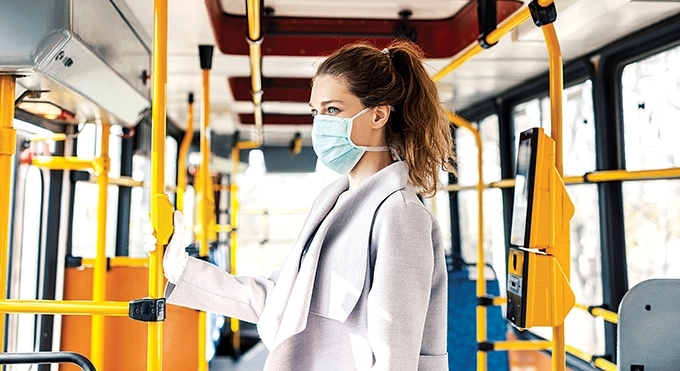
By Roger Helmy, Trapeze Group
Time and time again, when we have faced adversities, we have rallied only to become even stronger. The COVID-19 pandemic is no different.
While COVID-19 brought new challenges to transit, it also showed us the importance of making sure transit is positioned to manage whatever challenges lay ahead.
We need to ask ourselves:
1. How do we demonstrate how essential transit is to our communities?
2. How do we make transit safe for our riders and our employees?
3. How do we improve the technology and processes that agencies have today to be better prepared for the future?
Making transit essential: The future of mobility on demand
As COVID-19 started to spread and governments enacted self-isolation measures, ridership took an immediate hit.
In my local community, service frequency was cut in half. While at home, I could see 40-foot buses pass with no more than one or two riders. Would turning this into on-demand transit have made more sense for some communities? If you could use those excess vehicles to provide service in lower productivity areas, you could allocate more frequency to the routes that need it based on demand. With mobility on-demand technology, an agency can effectively manage physical distancing needs with a click of a button.
PASS, Trapeze’s paratransit software, provides customers with the building blocks to transform to a true mobility on demand system. It may only require one final piece to realize this type of solution and enable you to pivot in the future – a mobile app. Not only will this help future-proof your agency against the rise of new mobility players, but it also helps you demonstrate the vitalness of transit to your community.
Keeping riders safe with real-time information
In a post-COVID-19 world, real-time information is no longer a nice-to-have, but a must. And it is not enough to simply let a passenger know when the next bus is coming.
Passengers want to see their bus approaching on a map, know how full it is, if it has a bike rack available, if there is a detour ahead, and more. With social distancing requirements, having this type of real-time information is vital. If they know a vehicle is only 50% full, they can be assured they will get a seat while adhering to physical distancing.
One agency that did an excellent job providing this type of information to riders is Sun Tran, in Tucson, Arizona. They provide real-time information to their passengers using Trapeze’s passenger information tools. Riders can use their website or download an app to see where their bus is, how full it is, and more — much like using a TNC app.
Another agency, IndyGo, reached out to us to reconfigure their IVR system to generate COVID-19 specific outbound phone calls to all their paratransit passengers. Passengers received automated calls keeping them up to date of the situation relating to their service needs. This is another great way to provide real-time information to passengers and automating it so there’s less manual work for your agency.
A critical look at transit technology
There are many ways that transit technology helped agencies manage through COVID-19 — and ways technology can be further utilized, right now, to improve business processes.
For example: self-service tools for operators and drivers. While the technology has existed for years, only a few agencies leverage online picking of work, holidays, and vacation. Imagine getting a notification from your app, letting you know your pick is coming up in a few minutes, and being able to make that selection wherever you are.
The technology has been available for some time. Now is the time to focus on transforming this critical function. The requirements for physical distancing will exist in the short — and maybe even long-term — and these types of remote dispatching tools can ensure the safety of your employees and your riders.
Agile technology for a post-COVID-19 world
During the pandemic, I witnessed transit agencies leverage existing technology to offer new services.
Metro Mobility in Minneapolis used PASS to coordinate grocery deliveries to its vulnerable population. Others leveraged our tools to support contact tracing. If a driver or rider have a confirmed case of COVID-19, a list of all possible transmissions can be created.
As more communities and businesses re-open, and agencies move to regular service, it will become even more important to be able to use your software in these agile ways.
Takeaways
As we prepare for a new normal, here are a few takeaways to think about:
1. COVID-19 showed us that transit can act quickly. Continue to evaluate how you can adapt to new challenges and use your existing technology to compete with these players.
2. It’s time to figure out how to enable self-service tools so we can enforce physical distancing and make showing up to work a lot easier too.
3. To make riders want to ride transit again, we need to enforce safety measures and elevate the rider experience through providing more seamless, up-to-the-second real-time information.
Roger Helmy is the chief of product at Trapeze Group. He leads product management and design and ensures that our solutions are solving our customers’ pain points. Roger is passionate about leveraging technology to create safe, reliable, convenient, and cost-effective integrated mobility networks. Roger is a graduate of the University of Toronto, with a B.A.Sc. in Electrical Engineering. He enjoys spending time with his family and friends, listening to music, being outdoors, and various sports. Visit www.trapezegroup.com for more information.
